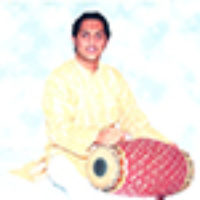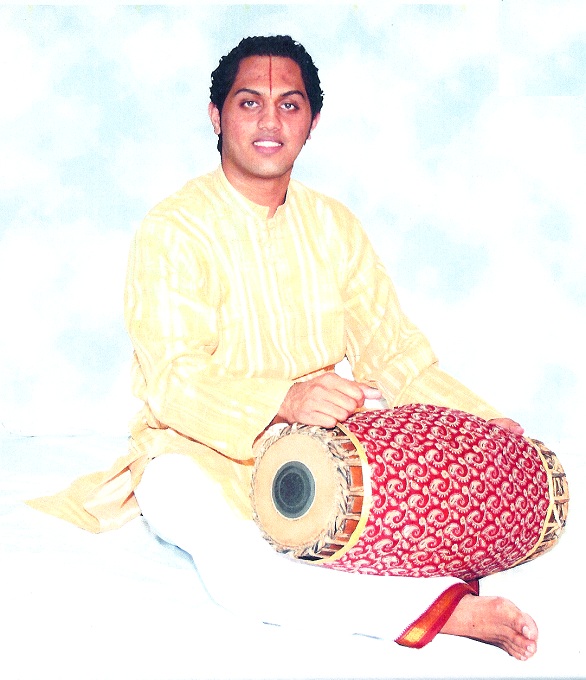
Nirmal Narayan
South Indian Carnatic percussion
South Indian Carnatic music can be conceived as an interaction between two sets of syllables — the melody, or Raaga, distinguished primarily by pitch, and the percussion accompaniment, distinguished by a wide variety of sounds that are controlled and synchronized by the patterns of Tala, a recurring time measure or rhythmic cycle. There are many Talas covering a vast range of time measures and each Tala has its own characteristic structure or divisions, giving rise to not only a variety of time signatures, but also influencing the patterns in singing and drumming.
The mridangam is the primary percussion instrument in Carnatic music and leads the Tala, or rhythmic accompaniment to the music. The regular beats in a Tala cycle of the mridangam are the foundation upon which intricate devices of cross-rhythm and syncopation are built. In essence, the Tala of the mridangam serves as a rhythmical frame and time reference for both the music composition and its variations. Thus the major role of a mridangist in an ensemble is to maintain the tempo and enhance the spirit of the song through embellishing and reinforcing the melodic line of the song.
Nirmal Narayan has been studying Carnatic music for over two decades. He learned to play the mridangam from Poovalar Srinivasan and is a disciple of Umayalpuram Sivaraman.
Nirmal was a master artist in ACTA’s Apprenticeship Program in 2012, with apprentice Chinmai Raman. The apprenticeship substantially increased Chinmai’s improvisation skills on the mridangam, enabling him to lead Carnatic musicians at full-length concerts.

